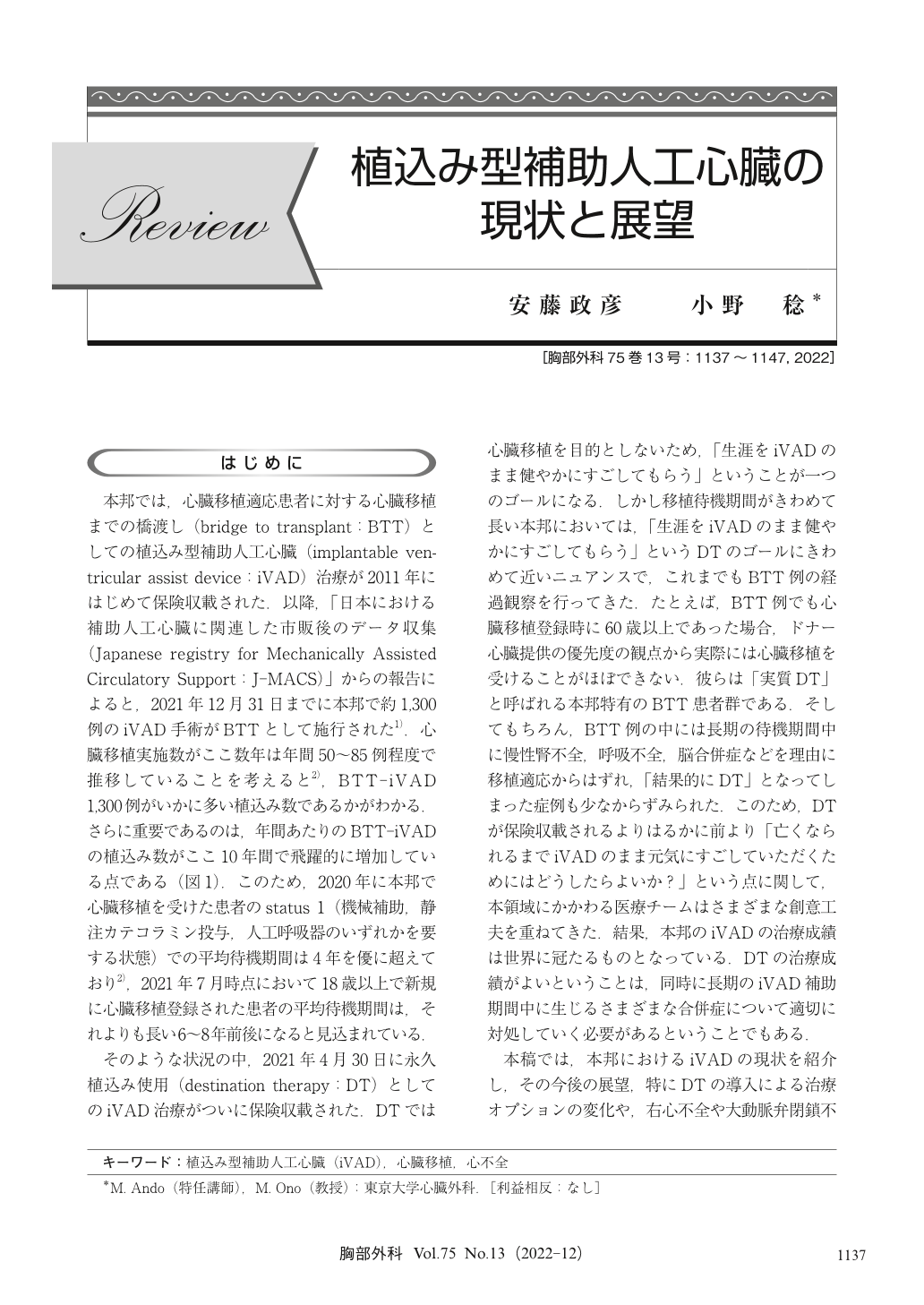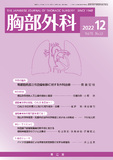Japanese
English
- 有料閲覧
- Abstract 文献概要
- 1ページ目 Look Inside
- 参考文献 Reference
本邦では,心臓移植適応患者に対する心臓移植までの橋渡し(bridge to transplant:BTT)としての植込み型補助人工心臓(implantable ventricular assist device:iVAD)治療が2011年にはじめて保険収載された.以降,「日本における補助人工心臓に関連した市販後のデータ収集(Japanese registry for Mechanically Assisted Circulatory Support:J-MACS)」からの報告によると,2021年12月31日までに本邦で約1,300例のiVAD手術がBTTとして施行された1).心臓移植実施数がここ数年は年間50~85例程度で推移していることを考えると2),BTT-iVAD 1,300例がいかに多い植込み数であるかがわかる.さらに重要であるのは,年間あたりのBTT-iVADの植込み数がここ10年間で飛躍的に増加している点である(図1).このため,2020年に本邦で心臓移植を受けた患者のstatus 1(機械補助,静注カテコラミン投与,人工呼吸器のいずれかを要する状態)での平均待機期間は4年を優に超えており2),2021年7月時点において18歳以上で新規に心臓移植登録された患者の平均待機期間は,それよりも長い6~8年前後になると見込まれている.
In 2011, implantable ventricular assist device (iVAD) was initially approved in Japan as bridge-to-transplant (BTT) indication. Since then, more than 1,300 iVAD implants were conducted as BTT, and this case number per year is rapidly increasing, especially after the approval of iVAD implant in 2021, as destination therapy (DT) indication. From now on, some of DT patients will be eventually registered for heart transplantation, once their exclusion criteria are cleared, thus extending waiting time of BTT patients, in the setting of serious donor shortage in Japan. Therefore, to improve the outcome of iVAD patients, both BTT and DT, it is imperative to manage device-associated complications, that can occur during prolonged long-term iVAD support. In the present review, we summarize the recent updates on the current trend and the future perspectives of iVAD treatment in Japan, in terms of the effect of DT approval on this treatment modalities and device-associated complications, specifically right ventricular failure and aortic regurgitation.

© Nankodo Co., Ltd., 2022


